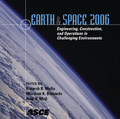Strategies for Natural Ventilation of Urban Office Buildings
Publication: Earth & Space 2006: Engineering, Construction, and Operations in Challenging Environment
Abstract
Town Planners are expecting that both city populations and the percentage of people living in cities will increase. Predictions are that between 1990 and 2025, the number of people living in urban areas will double to more than 5 billion; if that does happen than almost two-thirds of the world's population will be living and working in cities. Interestingly, 90 percent of that increase will occur in developing countries. The world's urban population is currently growing at four times the rate of the rural population. Such pressure means that either more land will be taken up by cities or that taller buildings will be required. And this increased building density could mitigate against passive design approaches such as natural ventilation. Recent studies in the Boundary Layer Wind Tunnel at James Cook University, Townsville Australia, have suggested one design approach that could be used to address these issues. Designers are making greater use of double facades on buildings (where there is a significant gap between the inside and outside cladding). Their adoption is often linked to a natural ventilation strategy for the overall building. The study demonstrated that if the cladding was sealed to the outside but open at the top and at each floor than an even negative (suction) pressure was developed over the face of the building inside the cladding. This finding is not recognised in the present literature. In addition, it has the further advantage that this pressure is independent of wind direction (often cited as one problem with most natural ventilation strategies). The study also looked at the impact of air wells and wind catchers or "hoods" over those air wells on the natural ventilation potential of buildings. This showed that even positive pressures were developed inside the air wells. This suggested that a combination of these two namely double facades and air wells with wind catchers could be the optimal solution for natural ventilation of the building. This paper outlines the potential of such an approach against a context of the continuing pressure on urban building densities.
Get full access to this chapter
View all available purchase options and get full access to this chapter.
Information & Authors
Information
Published In
Copyright
© 2006 American Society of Civil Engineers.
History
Published online: Apr 26, 2012
Authors
Metrics & Citations
Metrics
Citations
Download citation
If you have the appropriate software installed, you can download article citation data to the citation manager of your choice. Simply select your manager software from the list below and click Download.
